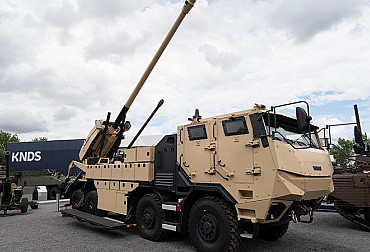The war in Ukraine as an example of the problematic nature of the effective use of mobilized civilians
The war in Ukraine has underscored not only the strategic and military differences between professional soldiers and mobilized civilians but also the complex challenges of effectively deploying these groups on the modern battlefield. Mobilizing civilians, particularly during a prolonged conflict like the war in Ukraine, raises questions regarding military effectiveness, as well as social, psychological, and logistical challenges.

Types of Military Personnel
-
Professional Soldiers
Professional soldiers form the backbone of a modern army. They receive regular training, gain experience in diverse operations, and are often specialized in specific military areas. Their ability to respond swiftly to emerging threats and coordinate complex operations is invaluable. In Ukraine, professional soldiers are present in all key combat units, including elite forces, and their extensive preparation and experience enable them to adapt tactics as situations evolve. -
Reserve Soldiers
Reserve soldiers are individuals with past military careers who are no longer active members of the armed forces. They are among the first resources utilized during mobilization to replenish losses or expand forces. While quickly deployable, they may require additional training to restore readiness. -
Active Reservists
These are members of the reserve forces who regularly undergo training to maintain their military skills. This personnel type is flexible and ready for rapid deployment. Although effective on the battlefield, they may struggle with modern technologies and rapidly evolving tactics. -
Mobilized Civilians
Mobilized civilians, individuals with no prior military training, face the greatest challenges in effectiveness. In countries less sensitive to human losses, their training may be minimal or even nonexistent, leading to low or negligible combat efficiency.
Social and Psychological Aspects of Mobilization
During high-intensity conflicts, reserves of trained soldiers are quickly depleted, often shifting the burden of war to civilian populations. Mobilization deeply impacts society and individuals:
- Adaptation to Military Life: Transitioning from civilian to military life is a significant challenge, requiring integration into units and adaptation to stressful combat conditions.
- Family and Social Strain: Mobilized individuals often leave families and jobs, creating emotional and economic pressures.
- Psychological Challenges: Stress, anxiety, and depression are common, further exacerbated by demanding training and the constant threat of harm. These factors can severely impact morale, combat efficiency, and responsiveness under pressure.
Balancing the selection of mobilized age groups is critical. Mobilizing younger individuals for their adaptability and endurance risks long-term demographic impacts, including a potential future productivity crisis if significant numbers are lost.
New Units vs. Replacing Losses
Creating new units from mobilized civilians is a time-intensive process. These recruits must adapt to the military environment and learn to operate modern technology. For example:
- Ukrainian Territorial Defense Units: Initially light infantry without vehicles or artillery, these units later evolved into mechanized and motorized brigades. However, compressed training due to a lack of skilled instructors often leaves these new formations less prepared than established forces.
Replacing losses within experienced frontline units is generally more effective. Failure to replenish seasoned units can lead to a loss of combat readiness, rendering them operational only on paper.
Russian Mobilization Practices
Russia’s approach to mobilization during the conflict includes a mix of strategies:
- Reinforcing Existing Units: Personnel levels of peacetime units were bolstered.
- Creating Independent Units: These often lacked the support systems required for fully operational brigades, reducing their functionality to that of regiments.
- "Capitalist Mobilization": Recruitment of volunteers with high financial incentives. This approach avoids mass conscription, reducing public exposure to war's negative impacts, and often targets economically disadvantaged individuals with debts. While financially burdensome, this method has the advantage of tapping into specific societal groups with less overall disruption.
Conclusion
The war in Ukraine underscores the strategic and operational challenges of mobilizing civilians for modern warfare. While professional soldiers and trained reserves provide robust capabilities, the integration and effective deployment of untrained civilians present multifaceted difficulties. Addressing these challenges requires a balance between immediate military needs and long-term societal consequences.
Sources: International Centre for Defence and Security, CNA, Radio Free Europe




















